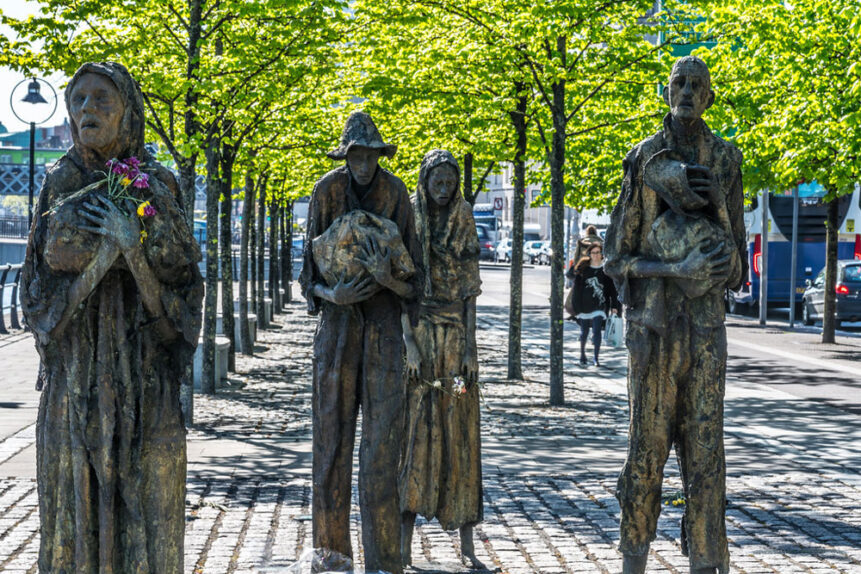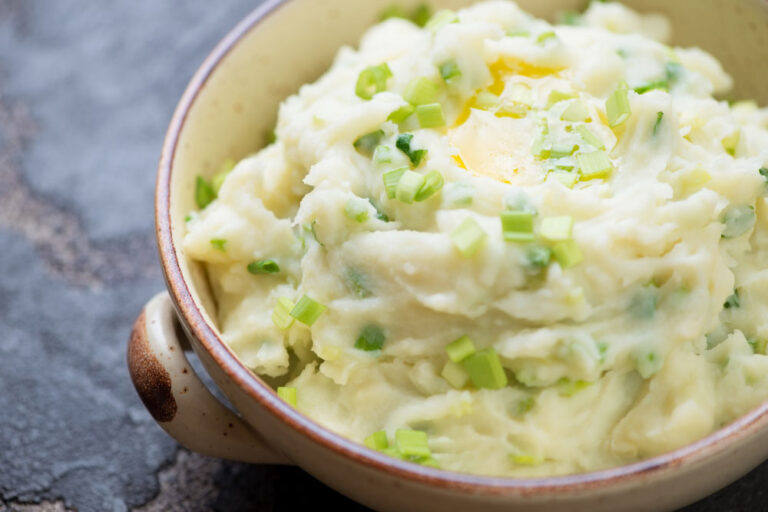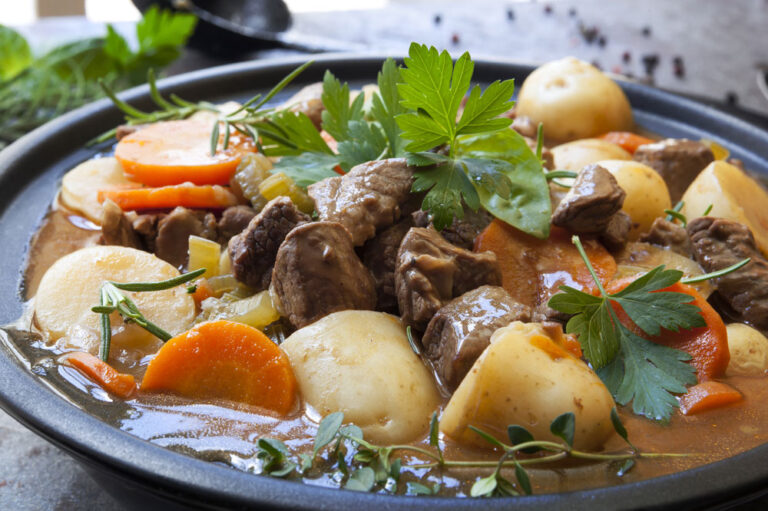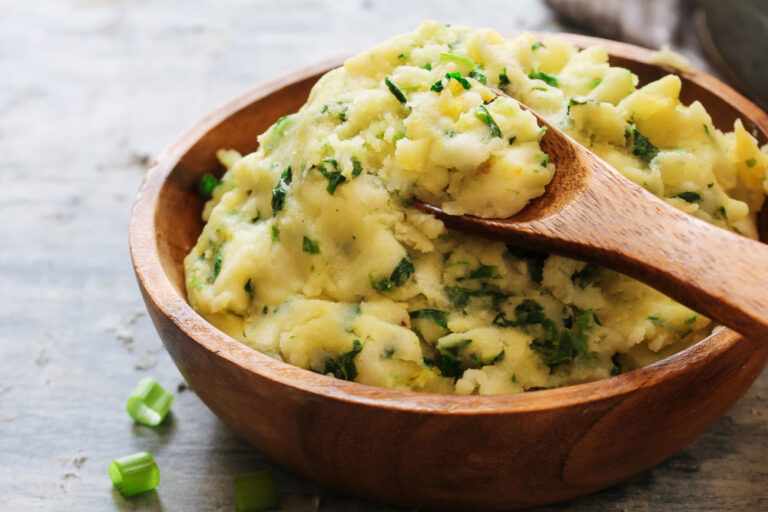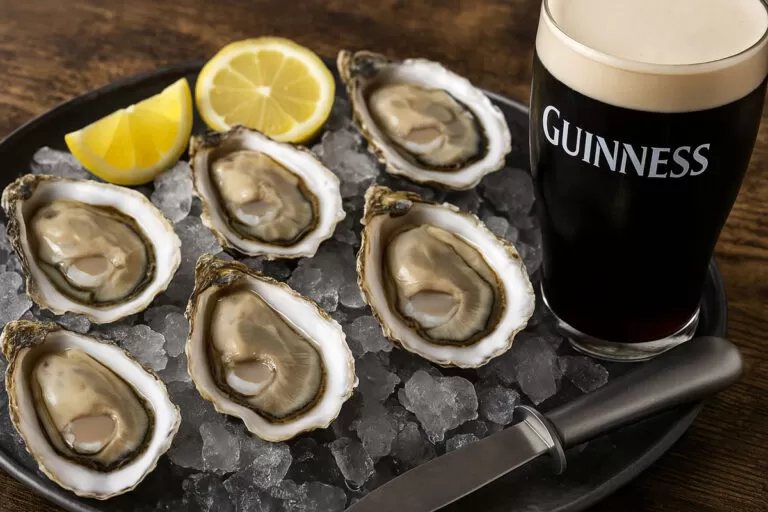The potato has been a staple crop in Ireland since the late 16th century, when it was introduced to the country by English explorers. At that time, Ireland was a poor country, with a population that was largely dependent on agriculture for their survival. The potato was an ideal crop for the Irish people, as it was easy to grow and maintain, even in poor soil and harsh weather conditions.
Over time, the potato became more and more important to the Irish diet. It was cheap, filling, and versatile, and it could be prepared in a variety of ways—from mashed potatoes to potato cakes to Irish stew. For many rural families, a typical daily meal consisted of nothing more than boiled potatoes and a pinch of salt. As the population of Ireland grew—nearly doubling between 1780 and 1840—the potato became the primary source of sustenance for millions of people.
The Fragile Foundation of a Nation
By the early 19th century, the Irish peasantry had come to depend almost exclusively on the potato. The crop could yield more calories per acre than any other, which made it ideal for small plots of rented land. Many tenant farmers and laborers survived on diets that were 90% potato-based. This dependence created a dangerously narrow nutritional and agricultural base. While the potato sustained life, it also masked the deeper issues of poverty, land inequality, and political neglect under British colonial rule.
Most of the land in Ireland was owned by absentee British landlords. Irish tenants, often living in overcrowded cabins and working small plots, had little security or rights. They paid high rents, and in return received no guarantee of protection or support in times of crisis. The economic system was geared toward export, meaning that while the Irish starved, food such as wheat, oats, butter, and beef continued to be exported to England.
The Blight and the Collapse
In 1845, a mysterious and devastating fungus—Phytophthora infestans—swept through Europe and reached the Irish shores. It infected the potato plants, causing them to rot in the ground. Within weeks, entire fields were ruined. Over the next several years, repeated crop failures plunged Ireland into famine. While the blight also affected other European nations, no country suffered as catastrophically as Ireland.
The Great Famine, or An Gorta Mór in Irish, lasted from 1845 to 1852. It caused the deaths of over one million people and forced another million to emigrate. The worst-hit areas were the western and southern counties—Galway, Mayo, Clare, Kerry, and Cork—where poverty was deepest and potatoes were the sole staple.
The response from the British government was widely criticized. While some relief efforts were initiated, they were inconsistent, underfunded, and often tied to bureaucratic restrictions. Workhouses overflowed with the sick and starving. In some cases, families had to abandon their children just to survive another day. The famine revealed not just the vulnerability of Ireland’s rural economy, but also the indifference and mismanagement of colonial rule.
Emigration, Diaspora, and Lasting Trauma
The famine marked the beginning of a massive wave of Irish emigration. Families scraped together what little they had to buy passage on overcrowded, disease-ridden ships bound for North America. These so-called “coffin ships” were often fatal journeys. Those who survived settled in cities like Boston, New York, and Montreal, establishing vibrant Irish communities abroad. The Irish diaspora, shaped by famine and exile, would go on to influence politics, culture, and labor movements in their new homelands.
The population of Ireland fell by 25%, and it continued to decline for decades. Villages were abandoned, and the Irish language—once dominant in the west—suffered a significant blow, as many of the native speakers either perished or emigrated.
The psychological scars of the famine endured for generations. The trauma entered into folk memory, oral tradition, music, and literature. Songs like Skibbereen and poems like The Famine Year by Jane Wilde captured the anguish of the period. Even today, famine survivors are remembered with reverence in many Irish households, and emigration is seen not merely as a choice, but often as a legacy of forced exile.
Cultural and Political Awakening
The famine also helped awaken a new political consciousness among the Irish. It exposed the failure of the landlord system and deepened distrust of British governance. In the decades that followed, nationalist movements like the Land League and the push for Home Rule gained momentum, fueled in part by the memories of injustice during the famine years.
Additionally, the famine transformed Irish agriculture. After the crisis, there was a shift from tillage (growing crops) to pasture-based farming (raising livestock), which required fewer laborers. This contributed further to rural depopulation and emigration.
Remembering the Potato Famine Today
Today, the memory of the Great Famine is preserved through national memorials, museums, and educational initiatives. In Dublin, the haunting bronze sculptures on Custom House Quay depict gaunt figures walking toward emigration ships. The Irish National Famine Museum at Strokestown Park, and the famine memorial in Skibbereen, County Cork, offer powerful reminders of what the nation endured.
Every year, the National Famine Commemoration Day serves to honor those who suffered and perished, and to reflect on global hunger and inequality today. The potato, once a symbol of survival and despair, is now celebrated in Irish cuisine, culture, and festivals—not only for its practicality, but for the history it represents.
Conclusion: More Than Just a Crop
The story of the potato in Ireland is more than agricultural history—it’s a story of resilience, tragedy, and survival. It highlights the fragility of life under unjust systems, the strength of community under pressure, and the determination of a people to rebuild from ruin. The Great Famine left a profound mark on Ireland, shaping its demographics, identity, and relationship with the wider world.
In remembering the famine, we honor not only the lives lost but also the enduring spirit of the Irish people—those who stayed, those who left, and those who still carry the legacy in their hearts today.
TIMELINE: KEY EVENTS OF THE GREAT FAMINE (1845–1852)
|
Year |
Event |
|
1845 |
Phytophthora infestans (potato blight) appears in Ireland; about one-third of the crop is lost. |
|
1846 |
Blight returns with greater severity; nearly total failure of potato crop. Starvation begins to spread. Public works are introduced as a relief effort. |
|
1847 |
Known as Black ’47—the worst year of the famine. Workhouses overflow, soup kitchens are introduced. Thousands die of starvation and disease. |
|
1848 |
Continued famine and mass evictions. Emigration peaks; coffin ships sail to North America. |
|
1849 |
Cholera outbreaks spread across famine-stricken areas. Queen Victoria visits Ireland. |
|
1851 |
Census reveals a population drop of 1.6 million since 1841. Many villages are abandoned. |
|
1852 |
The famine ends, though the effects linger. Emigration continues steadily for years. |
MEMORIAL SITES TO VISIT
In Ireland:
- Famine Memorial, Dublin – Bronze sculptures of starving figures walking along the River Liffey, symbolizing the journey toward emigration.
- Irish National Famine Museum, Strokestown Park, Co. Roscommon – Located in a former landlord’s estate; explores famine causes, effects, and responses.
- Famine Graveyard, Skibbereen, Co. Cork – One of the worst-affected areas; mass burial sites and a dedicated memorial center.
- Doo Lough Valley, Co. Mayo – Site of a tragic famine walk in 1849; commemorated with a stark stone cross.
- Murrisk Famine Memorial, Co. Mayo – A haunting sculpture of a famine ship with skeletal rigging, set against the Atlantic coastline.
Abroad:
- Ireland Park, Toronto, Canada – Commemorates Irish emigrants who arrived during the famine, featuring similar sculptures to those in Dublin.
- Grosse Île and the Irish Memorial, Quebec, Canada – A quarantine station where many Irish emigrants died; now a National Historic Site.
- Boston Irish Famine Memorial, USA – Two contrasting sculptures (famine vs. prosperity) highlight the journey from hardship to hope.
- Liverpool Irish Famine Memorial, UK – Honors those who fled to England during the crisis.
TRADITIONAL IRISH POTATO RECIPES
1. Champ
- Creamy mashed potatoes with scallions (spring onions), butter, and milk.
- Traditionally served with a well of melted butter in the center.
2. Boxty
- Potato pancake made with a mix of grated raw potato and mashed potato.
- Crisp on the outside, soft on the inside. Often eaten with eggs or bacon.
3. Colcannon
- Mashed potatoes blended with cabbage or kale, butter, and cream.
- A traditional Halloween dish, often with coins or charms hidden inside!
4. Irish Potato Farls
- Soft, griddled potato bread made from mashed potatoes and flour.
- A staple of the Ulster fry (full Irish breakfast in Northern Ireland).
5. Potato and Leek Soup
- A comforting soup of potatoes, leeks, onions, and cream.
- Ideal for cold days and historically eaten with soda bread.
6. Irish Stew
- Hearty lamb or mutton stew with potatoes, carrots, and onions.
- Potatoes serve both as an ingredient and thickener in the broth.
IRISH POTATO LEEK SOUP
Description: A classic Irish soup made with potatoes, leeks, and...
View Recipe...CHAMP
Description: Champ is a traditional Irish dish made with mashed...
View Recipe...BOXTY
Description: A traditional Irish dish made with grated potatoes, flour,...
View Recipe...IRISH STEW
Description: A hearty and comforting stew made with lamb, potatoes,...
View Recipe...IRISH POTATO FARLS
Description: Irish Potato Farls are a traditional Irish potato bread...
View Recipe...COLCANNON
Description: A traditional Irish dish made with mashed potatoes, cabbage...
View Recipe...



